The History Of Fashion In India showcases a vibrant journey from ancient textiles to contemporary global trends, reflecting the country’s rich cultural heritage. At mens-fashion.net, we delve into this transformation, offering insights into how Indian fashion has evolved while staying true to its roots. Discover how traditional techniques blend with modern aesthetics, influencing men’s style across the USA and beyond, and explore curated advice on menswear trends and styling tips for the modern man.
1. How Did Ancient Civilizations Influence Early Indian Fashion?
Ancient civilizations significantly shaped early Indian fashion through their rudimentary yet artistic approaches to clothing and adornment. The Indus Valley Civilization, dating back to 3300-1700 BCE, provides some of the earliest evidence of clothing in the Indian subcontinent. Archaeological findings such as the statue of the “Priest-King” from Mohenjo-Daro depict draped garments that suggest a sophisticated understanding of textile use. Similarly, the Vedic period (1500-500 BCE) saw the development of garments made from cotton, wool, and linen, with mentions of dyed and embroidered fabrics in the Rigveda, highlighting an early emphasis on aesthetics and craftsmanship.
These ancient practices laid the foundation for subsequent developments in Indian fashion, influencing the materials used, the styles adopted, and the decorative techniques employed in later periods. For instance, the use of draped clothing, as seen in ancient sculptures and texts, remained a prominent feature of Indian attire, evolving into the sari and dhoti, which are still worn today. The legacy of ancient civilizations is thus deeply embedded in the DNA of Indian fashion, providing a rich heritage upon which modern styles are built.
2. What Role Did The British Raj Play In Shaping Indian Fashion?
The British Raj had a complex and multifaceted role in shaping Indian fashion. On one hand, it led to the decline of indigenous textile industries due to the influx of cheaper, mass-produced British textiles. This economic disruption threatened traditional crafts and livelihoods, as local artisans struggled to compete with the industrialized production of the British Empire. According to research from the Indian Brand Equity Foundation (IBEF), the British policies aimed to transform India into a supplier of raw materials and a consumer of British goods, severely impacting the Indian textile sector.
On the other hand, the British Raj also indirectly contributed to the rise of nationalist movements that emphasized the use of Khadi, a hand-woven cloth, as a symbol of self-reliance and resistance against British rule. Mahatma Gandhi famously promoted Khadi as a means of economic empowerment and national pride, turning it into a powerful emblem of Indian identity. In addition, the British influence introduced new styles and tailoring techniques, which were gradually incorporated into Indian fashion, leading to a fusion of Eastern and Western aesthetics.
3. How Did The “Roaring Twenties” Influence Indian Attire?
The “Roaring Twenties,” a period of exuberant social and cultural change, left a notable mark on Indian attire, blending global trends with local sensibilities. This era, characterized by flapper dresses, jazz music, and a spirit of liberation, saw Indian women adopting Western silhouettes while retaining traditional elements. Cholis (blouses) began to mirror the shimmering, embellished styles of Charleston dresses, often featuring lace, satin, cotton, or silk. These dresses typically had long sleeves. Sarees were paired with long-sleeved or mid-sleeved blouses, reflecting the influence of Western fashion trends, while maintaining the elegance of traditional Indian garments.
This fusion showcased India’s adaptability to global fashion movements, as Indian designers and consumers creatively integrated new styles into their existing wardrobes. The “Roaring Twenties” thus represented a period of sartorial experimentation and cross-cultural exchange, laying the groundwork for future innovations in Indian fashion.
4. How Did The Post-Wall Street Crash Era Affect Fashion Trends in India?
The Post-Wall Street Crash era, marked by the economic hardships of the 1930s, influenced fashion trends in India by encouraging a more conservative and practical approach to clothing. The flamboyant and daring styles of the Roaring Twenties gave way to more modest and functional designs, reflecting the prevailing economic austerity. Hemlines descended to mid-calves, and garments featured longer collars and pinched waists, mirroring the global trend towards more restrained silhouettes.
The “Bonnie and Clyde” look, with its blend of practicality and understated elegance, also gained traction in India, appealing to those who sought stylish yet economical clothing options. This period demonstrated how global economic events can shape fashion choices, as Indian consumers adapted their style to reflect the somber mood and limited resources of the time.
5. What Transformations Did Indian Fashion Undergo Between The 1980s And 1990s?
The 1980s and 1990s were transformative decades for Indian fashion, marked by the expansion of fashion schools and the increasing participation of women in the workforce. The 1980s introduced disco-inspired styles, featuring shimmery and glittery costumes, denim and leather biker jackets, and chiffon sarees in vibrant colors. This era saw a fusion of Indian and Western clothing styles, reflecting a growing openness to multiculturalism. According to a study by the Fashion Institute of Technology (FIT) in July 2023, the rise of Bollywood also played a significant role in popularizing new trends and influencing consumer preferences.
The 1990s brought in full-sleeve salwar kameez, floral dresses, long skirts, denim, shades, and dungarees, indicating a shift towards more relaxed and versatile styles. These decades set the stage for the adoption of more Westernized concepts in the fashion industry, with Indians making bolder and more stylish choices.
6. How Has The 21st Century Shaped The Indian Fashion Industry?
The 21st century has brought significant changes to the Indian fashion industry. With increasing independence, women have embraced pants, short skirts, and bold costumes, leading to more cosmopolitan fashion choices. This transformation is evident in the evolution of saree blouse styles, with halter-neck, back-button, high-neck, Katori style, and puffed sleeve blouses becoming popular alternatives to traditional designs. Sarees are now often draped in Gujarati styles, reflecting a fusion of regional influences.
The Indian film industry continues to exert a strong influence on fashion trends, popularizing various styles and designs. As noted in a report by the Economic Times, the Indian Fashion Industry is experiencing substantial growth, driven by both offline and online segments. This era is marked by a stable and clear picture of the Indian Fashion Industry, characterized by innovation and global integration.
7. When Did The Concept Of Branded Clothing Emerge In India?
The concept of branded clothing emerged in India during the mid-20th century, gaining prominence as consumers increasingly sought quality assurance and distinctive styles. Liberty shirts were among the first to offer branded shirts in India in the 1950s, marking the beginning of a new era in the fashion industry. Since then, numerous national and global brands have established themselves, catering to the growing demand for branded apparel.
Leading national brands such as Allen Solly, Van Heusen, Louis Philippe, Charagh Din, Raymonds, and Arrow have become household names, offering a range of clothing options for men. The growth of the branded attire market is also driven by the increasing popularity of denim, with global brands like Levi’s, Lee, Seven Jeans, and Pepe Jeans entering the Indian market. Branded attires have significantly contributed to the evolution of the Indian fashion industry, offering consumers a wider range of choices and styles.
8. How Has The Trend Of Fusion Wear Impacted Indian Fashion?
The trend of fusion wear has revolutionized the Indian fashion scenario by blending contemporary, vintage, and Indo-Western styles. This fusion celebrates the beauty of both Eastern and Western aesthetics and has become increasingly popular in recent years. Top-notch fashion brands now incorporate fusion elements into their collections, reflecting its widespread appeal. The fusion wear trend has introduced long maxis with collars, hanky hems, cold shoulder maxis, crop-tops, heavy-duty capes, and tunics, showcasing its versatility and innovation.
Kurtas, lehengas, Indo-Western tops, and spaghetti kurtas are also gaining popularity, indicating a shift towards more experimental and eclectic styles. Foreign designers and brands have further influenced the fashion trend in India by introducing the concept of corporate dressing, which continues to evolve with added elements of modernity. Fusion wear has transformed the Indian fashion landscape, offering consumers a wide range of creative and stylish options.
9. What Is The Current Market Size And Growth Rate Of The Indian Fashion Industry?
The Indian Fashion Industry is currently experiencing significant growth, with a market size estimated at USD 100 billion. According to a report by the Economic Times, the industry is growing at a CAGR of 8-10 percent offline. The online fashion segment is expected to grow even faster, with a projected CAGR of 15-20 percent over the next five years.
The market for the fashion industry in India, particularly for women, is highly lucrative due to its scope and variety. The rapid growth of information technology has popularized the corporate look, while the revival of ethnocultural aesthetics has led to the popularization of traditional arts and crafts. International fashion brands are increasingly focusing on the immense potential of this sector, offering numerous opportunities to in-house fashion designers. The Indian fashion industry has expanded to such an extent that it now rivals the international fashion industry, becoming one of the most popular revenue-generating sectors in India.
10. What Are Some Notable Traditional Indian Embroidery Techniques?
Traditional Indian embroidery techniques are renowned for their intricate designs and cultural significance, with several styles gaining international recognition. Crewel embroidery, characterized by its use of wool threads to create elaborate patterns on fabrics, is often used for home décor and clothing. Chikankari, originating from Lucknow, involves delicate and artistic white-on-white embroidery, typically on muslin or cotton fabrics, and is highly valued for its elegance and sophistication. Zardozi, an opulent embroidery style using metallic threads, beads, and precious stones, is commonly used for bridal wear and formal attire, reflecting India’s rich heritage of craftsmanship.
These techniques, along with others like Kantha, Phulkari, and Shisha (mirror work), showcase the diversity and artistry of Indian embroidery traditions, contributing to the unique identity of Indian fashion. The integration of these traditional techniques into contemporary designs highlights the enduring appeal and adaptability of Indian craftsmanship.
11. Can You Elaborate on the Different Types of Sarees Woven in India?
India boasts a diverse range of sarees, each distinguished by its unique weaving techniques, materials, and regional origins. Kanjivaram sarees, from Tamil Nadu, are celebrated for their rich silk and intricate zari work, often featuring vibrant colors and traditional motifs. Mysore silk sarees, known for their fine silk and simple yet elegant designs, are a staple in Karnataka. Pochampalli sarees, from Telangana, are famous for their geometric patterns and ikat dyeing technique. Jamdani sarees, originating from Bengal, are characterized by their fine muslin fabric and intricate woven designs, often featuring floral and figurative motifs.
Banarasi sarees, from Varanasi, are renowned for their luxurious silk and intricate brocade work, typically featuring gold and silver threads. Bandhani sarees, from Gujarat and Rajasthan, are known for their tie-dye technique, creating vibrant patterns and textures. Sambalpuri sarees, from Odisha, showcase intricate ikat patterns and vibrant colors, reflecting the region’s rich textile heritage. Each type of saree represents a unique blend of artistry, tradition, and regional identity, contributing to the rich tapestry of Indian fashion.
Indian Sarees: A Regional Overview
| Saree Type | Origin | Key Features | Common Motifs |
|---|---|---|---|
| Kanjivaram | Tamil Nadu | Rich silk, intricate zari work, vibrant colors | Traditional motifs, mythological figures |
| Mysore Silk | Karnataka | Fine silk, simple designs, elegant appearance | Geometric patterns, floral motifs |
| Pochampalli | Telangana | Geometric patterns, ikat dyeing technique | Abstract designs, contemporary patterns |
| Jamdani | Bengal | Fine muslin fabric, intricate woven designs | Floral motifs, figurative patterns |
| Banarasi | Varanasi | Luxurious silk, intricate brocade work | Gold and silver threads, floral and paisley designs |
| Bandhani | Gujarat/Rajasthan | Tie-dye technique, vibrant patterns and textures | Dots, stripes, geometric shapes |
| Sambalpuri | Odisha | Intricate ikat patterns, vibrant colors | Traditional geometric and animal motifs |
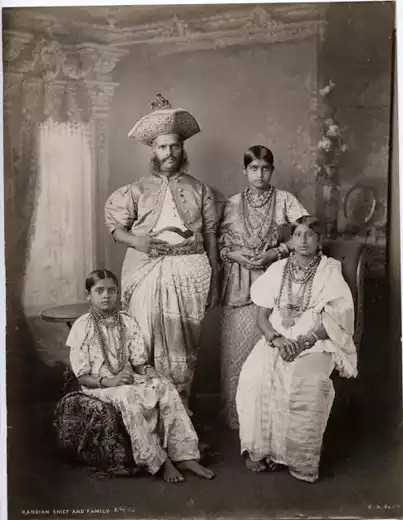
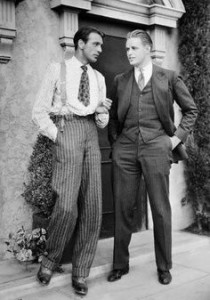
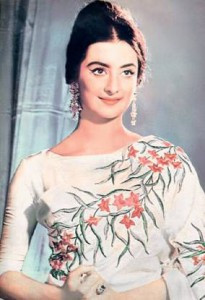
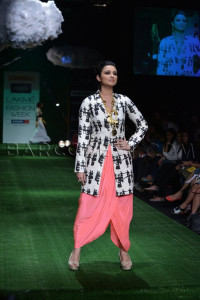
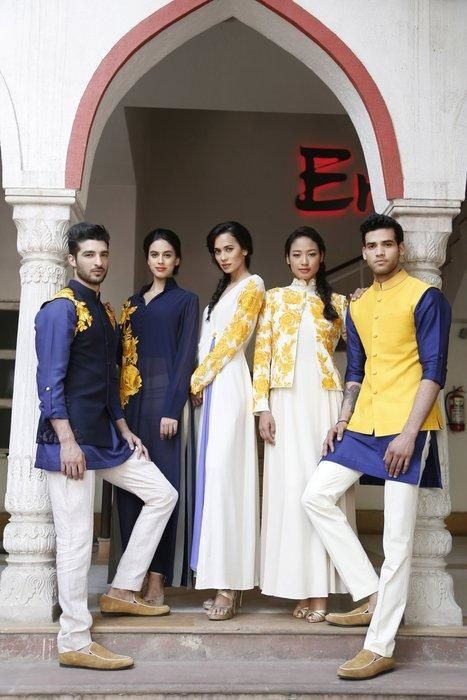
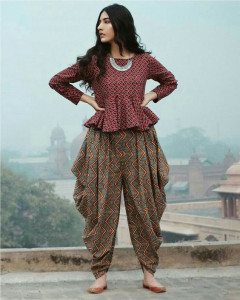
12. How Has Bollywood Influenced Indian Fashion Trends?
Bollywood has exerted a profound and lasting influence on Indian fashion trends, shaping consumer preferences and popularizing various styles. The film industry serves as a powerful platform for showcasing new designs, colors, and fabrics, which are quickly adopted by the masses. Iconic Bollywood actresses and actors often become trendsetters, with their on-screen looks influencing everyday fashion choices. According to a study by the Fashion Institute of Technology (FIT) in July 2024, Bollywood’s impact on fashion is particularly evident in bridal wear, with many brides drawing inspiration from the elaborate costumes and jewelry seen in films.
Bollywood also plays a crucial role in promoting traditional Indian attire, such as sarees, salwar kameez, and lehengas, while simultaneously introducing modern and Western-inspired styles. The fusion of traditional and contemporary elements in Bollywood fashion reflects the evolving tastes and preferences of Indian consumers. The film industry’s ability to blend cultural heritage with modern aesthetics has solidified its position as a key driver of fashion trends in India.
13. What Is Corporate Dressing, and How Has It Evolved in India?
Corporate dressing in India has evolved significantly over the years, reflecting the country’s integration with the global economy and changing workplace dynamics. Initially influenced by Western styles, corporate attire in India has gradually incorporated elements of traditional Indian fashion, creating a unique blend of professionalism and cultural identity. Early adopters of corporate dressing often favored tailored suits, shirts, and trousers, mirroring the styles prevalent in Western business environments.
However, as Indian fashion evolved, corporate attire began to incorporate traditional elements such as kurtas, salwar kameez, and sarees, often paired with blazers or jackets for a formal touch. This fusion reflects a growing emphasis on comfort, practicality, and cultural pride in the workplace. Today, corporate dressing in India is characterized by a diverse range of styles, from formal suits to Indo-Western ensembles, allowing individuals to express their personal style while maintaining a professional appearance. The ongoing evolution of corporate dressing in India underscores the dynamic interplay between global influences and local traditions.
14. What Are The Key Factors Driving Growth in the Indian Fashion Industry?
Several key factors are driving growth in the Indian fashion industry, reflecting the country’s evolving economic landscape and changing consumer preferences. Rising disposable incomes, particularly among the middle class, are enabling more people to spend on fashion and lifestyle products. The increasing penetration of e-commerce and online retail platforms is expanding access to a wider range of fashion brands and styles, driving sales and market reach. A study by the Indian Brand Equity Foundation (IBEF) highlights that the online fashion segment is expected to grow at a rapid pace, fueled by increasing internet usage and smartphone adoption.
The growing influence of social media and digital marketing is also playing a crucial role in shaping consumer preferences and driving demand for new fashion trends. The Indian fashion industry benefits from a rich pool of talent, including designers, artisans, and entrepreneurs, who are constantly innovating and pushing the boundaries of creativity. Government initiatives and policies aimed at promoting the textile and apparel sectors are further contributing to the industry’s growth.
15. How Is the Indian Fashion Industry Competing on a Global Scale?
The Indian fashion industry is increasingly making its mark on the global stage, driven by its unique blend of traditional craftsmanship, innovative designs, and cost-effective production capabilities. Indian designers are showcasing their collections at international fashion weeks and events, gaining recognition and acclaim from industry experts and consumers alike. The industry’s ability to integrate traditional Indian textiles and embroidery techniques into contemporary designs sets it apart from other global fashion hubs.
Many Indian fashion brands are expanding their presence in international markets through collaborations, partnerships, and retail outlets. The rise of sustainable and ethical fashion practices is also boosting the competitiveness of the Indian fashion industry, as consumers increasingly seek eco-friendly and socially responsible products. The Indian government is actively promoting the industry through trade missions, export incentives, and initiatives aimed at enhancing the skills and capabilities of local artisans and designers.
FAQ: Unveiling The History Of Fashion In India
1. What are the earliest forms of clothing in ancient India?
The earliest forms of clothing in ancient India can be traced back to the Indus Valley Civilization, where people wore draped garments made from cotton.
2. How did the British Raj impact Indian textiles?
The British Raj led to a decline in indigenous textile industries due to the influx of cheaper British textiles, but it also spurred the Khadi movement.
3. What was the “Roaring Twenties” fashion influence in India?
The “Roaring Twenties” saw Indian women adopting Western silhouettes, like embellished blouses and sarees, while retaining traditional elements.
4. How did the post-Wall Street Crash era change Indian fashion?
The post-Wall Street Crash era encouraged more conservative and practical clothing in India, with longer hemlines and restrained designs.
5. What key changes occurred in Indian fashion during the 1980s and 1990s?
The 1980s saw a fusion of Indian and Western styles, while the 1990s brought relaxed and versatile clothing options like salwar kameez and floral dresses.
6. How did the 21st century influence men’s fashion in India?
The 21st century introduced a mix of Western and Indian styles, with a focus on bold colors and modern designs, like jackets and suits.
7. When did the idea of branded clothing become popular in India?
Branded clothing became popular in India in the mid-20th century, with companies like Liberty Shirts offering branded shirts.
8. What is “fusion wear” and why is it important in Indian fashion?
Fusion wear blends contemporary and traditional styles, celebrating both Eastern and Western aesthetics, making it a versatile trend in Indian fashion.
9. What is the growth rate of the Indian fashion industry?
The Indian fashion industry is growing at a CAGR of 8-10% offline, with the online segment expected to grow by 15-20% over the next five years.
10. What are some well-known traditional embroidery techniques in India?
Some well-known traditional embroidery techniques in India include Crewel, Chikankari, and Zardozi, known for their intricate designs and cultural significance.
11. How has Bollywood changed men’s fashion in India?
Bollywood has significantly shaped men’s fashion by showcasing new styles, promoting designers, and creating trends for formal and casual wear.
12. What is corporate dressing, and how is it evolving in India?
Corporate dressing in India blends Western business attire with traditional elements, allowing for a mix of formal suits and Indo-Western ensembles.
13. How is the Indian fashion industry competing on a global scale?
The Indian fashion industry is competing globally with unique designs and traditional craftsmanship, as well as sustainable and ethical fashion practices.
At mens-fashion.net, we understand the challenges of staying updated with ever-changing fashion trends and finding attire suitable for various occasions. That’s why we offer comprehensive guides, styling tips, and brand recommendations to help you curate a wardrobe that reflects your personal style.
Ready to elevate your style? Visit mens-fashion.net today to discover the latest trends, explore style guides, and find the perfect pieces to express your unique identity.
Address: 227 W 27th St, New York, NY 10001, United States
Phone: +1 (212) 217-5800
Website: mens-fashion.net
